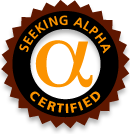Coca-Cola's Brand Bonds
EDDIE LAMPERT’S IDEA PAYS-OFF
In an earlier post I discussed "Sears Brand Bonds." What's the difference between these and the “Bowie Bonds” of ten years ago? In short the royalties were paid under contract to an independent third party. But there may be a way to make Eddie Lampert’s bold idea pay-off … by releasing Coca-Cola and its bottlers from “Marketing Hell.”
INTANGIBLE VALUE
It's widely known that 60% to 80% of the market cap of public companies is due to intangibles. Jonathan Knowles in his 2005 presentation to the CMO Council on "Brand Equity and Shareholder Value" reported that:
In 2003, the net tangible assets on the balance sheets of the companies comprising the S&P; 500 accounted for only 22% of their market value.
For a quick rundown on the components of intangible value see my audio slide show on Enterprise Marketing Expenses.
What's less widely known is which companies have the lion's share of their market cap driven by intangibles. Many of these companies are identified in my paper on Marketing Meets Finance (see Table 4, page 12). Coke, of course, is one of those companies.
COKE'S INTANGIBLES
The Coca-Cola Company (KO) had a market cap ($50.28 per share times 2.32 billion shares) of $117 billion on April 10, 2007. The book value of its assets was $30 billion. The book value of its intangible assets was $5 billion including $1.4 billion in Goodwill.
Subtract Coke's intangibles from total assets and assume the remaining $25 billion book value of tangible assets is a fair approximation of their replacement cost. This puts the market value of the company's intangibles at around $92 billion, or 79% of its market cap. Notice that the book value of Coke's intangibles (that $5 billion) is just 6% of their market value. This reflects the challenge accountants face in valuing intangibles.
CASH OUT OF MARKETING HELL
Can the Coca-Cola Company and its bottlers escape "Marketing Hell" by issuing "brand bonds?" Consider the possibilities of blending the approach taken by Bowie Bonds with that of the Sears Bonds.
Interbrand calculated the 2006 intangible value of the Coca-Cola brand at $67 billion. If this number is correct, compared with the company's $92 billion intangible market value, the remaining $25 billion represents the intangible value of the company's other brands.
Did you know The Coca-Cola Company offers more than 400 brands in over 200 countries? Well, we do! From Inca Kola, a soft drink found in North and South America, and Samurai, an energy drink available in Asia; to Vita, an African juice drink, and BonAqua, a water found on 4 continents, our product variety spans the globe!
Coca-Cola's other brands are marketed in six major categories: Energy Drinks, Juices, Soft Drinks, Sports Drinks, Tea & Coffee, and Water. In soft drinks alone there are fifteen brands and only three of these bare the Coca-Cola logo (Classic, Light, and Zero). Some of the other brands are Barqs, Fanta, Sprite and Fresca.
MONETIZE COKE'S "OTHER BRANDS"
So why not monetize their value by assigning ownership of the other Coca-Cola brands to a new independent company "OCC IP" (Other Coca-Cola Intellectual Property). Like Bowie's songs, these other brands are probably not worth enough individually to monetize. But taken as a group they are. And since the Coca-Cola brand remains the property of Coke, its market value likely will not be diluted.
FLOAT COKE'S OTHER BRAND BONDS
Like the Sears bonds, OCC IP would license both the Coca-Cola Company and Coca-Cola Enterprises to use the brands in exchange for ongoing royalty payments. Unlike Sears bonds, OCC IP would not be subsidiary of Coke. It would float the brand bonds at marketable coupon rates, face values, and maturity dates. So the market will determine the value of Coke's portfolio of other brands. The result would be an immediate increase in the enterprise value of both companies. And they would split the proceeds, reinvesting the cash to increase their shareholder value. Will this allow Coke and its bottlers to escape marketing hell? Please share your thoughts on this concept.
Thanks,
~V

